|
|
The current range of books. Click the image above to see them on Amazon (printed and Kindle format). More info on coinpublications.com |
|
|
-
Content Count
1,369 -
Joined
-
Last visited
-
Days Won
26
Posts posted by Bronze & Copper Collector
-
-
50 minutes ago, mrbadexample said:Thanks, it's hard to be sure sometimes.

Indeed....
And reinforces the difficulty of working from images...
-
5 hours ago, mrbadexample said:Can either of you tell me what eliminates obverse 2 please?

MEA CULPA, NOTHING ELIMINATES IT..
Upon further close examination, I'll recant my opinion and state that I now consider and believe YOUR original assessment of it being an obverse 2 to be the correct one.
It only serves to reinforce my belief that NOTHING substitutes for DIRECT EXAMINATION OF THE COIN IN HAND!!!
-
12 minutes ago, Bernie said:Not a 4 Gary, so that leaves 6 ?
From the image, I don't think it is a 2, 3, 5, or 7.... (1 is automatically eliminated inasmuch as the coin does not have a beaded border..)
Leaving either 4 or 6.
If you don't think it's a 4, then it is most likely an obverse 6.
Again, nothing substitutes for direct examination....
-
Just now, mrbadexample said:My personal assessment and attributions are to categorize them as F-274a variants.
Inasmuch as the F-274a is considered to actually be a 6 over higher 6, unlike the F-282a which is clearly a 6 over 8, I consider all the various incarnations of 6 over 6 to be F-274a variants.
Again, these are only my thoughts and how I have classified them in my collection..
-
 1
1
-
-
1 hour ago, mrbadexample said:If I did this correctly, it should link to different variants of the F-274a that I posted a while back...
-
-
1 hour ago, Peckris 2 said:I don't have my Obverse 5 to hand but from memory it looks right.
Obverse 5
-
 1
1
-
-
2 hours ago, blakeyboy said:And so it begins.....:)
That's essentially the NORTH & SOUTH of it....
-
 1
1
-
-
1 hour ago, blakeyboy said:Domain?? Geddit??
My science puns are wasted here.......
Or are they?.......( cue sound of punsters sharpening pencils...)
Apparently you are POLES apart....
-
 1
1
-
-
4 hours ago, Diaconis said:Most people think that all testicles are pretty much the same, but there's a vas deferens.
Apropos to the above:
A man travels to Spain and goes to a restaurant near the bull arena for a late dinner. He orders the house special and he is brought a plate with potatoes, corn, and two large meaty objects. "What's this?" he asks?
"The Matador Special, Senor," the waiter replies.
"What meat is it?" the man asks.
"Cojones," the waiter explains, "They, are the testicles of the bull who lost at the arena this afternoon."
At first the man is disgusted; but being the adventurous type, he decides to try this local delicacy. To his amazement, it is quite delicious. In fact, it is so good that he decides to come back again the next night and order it again. This time, the waiter brings out the plate, but the meaty objects are much smaller.
"What's this?" he asks the waiter.
"The Matador Special, senor," the waiter replies.
"No, no," the man objects, "I had the Matador Special yesterday and it was much bigger than this."
"Senor," the waiter explains, "the bull does not always lose."-
 1
1
-
 3
3
-
-
16 hours ago, bhx7 said:So a bit of a long shot, and definitely one for all you bronze collectors. I have been going back through my Victoria half pennies and came across this one. A 1862 Half Penny with peculiar obtrusion's from under the F of HALF. I no longer have my microscope as it broke and I haven't got around to getting another, so have spent a good while trying to capture what I can see under a loop. I have also drawn a very crude sketch of what the F should be like and what mine is like. Has anyone seen this before? Is it noted somewhere? Any idea's would be appreciated. Thanks guys
I believe it is what Iain Dracott identifies as a F over F in his Victorian Half Penny article...
More defined than in my specimen....
Nice example of the variety....
-
-
-
16 minutes ago, blakeyboy said:Really???
I'm amazed......mind you, that means were are now a shilling......
See what I did there?
We better hope that eBay doesn't read this. They might get the wrong idea....
-
 1
1
-
-
1 hour ago, Paddy said:Interestingly in the detailed description he does highlight that the apparently valuable coin is a restrike. Covers himself when the disappointed buyer realises his mistake!
Tin NOT included!!!
-
 1
1
-
 1
1
-
-
2 hours ago, jelida said:Eeek! I think that one is beyond me! But that is a shame. Large date I presume? Thankfully I do have a reasonable example, that came from a forum member.
Jerry
A job for Allen Stockton...
-
 1
1
-
-
5 hours ago, blakeyboy said:I can't work out how it's done anyway- did someone tool the area flat, and then somehow remove a '0' from another penny
and somehow fix it on? Surely 'tooling' implies removing material, yet to do a '0' requires adding material?
If that were the case, it would beg the question of what years are available to take the "0" from.
I am probably missing a date as I am writing this without referring to a guide, but the only dates on copper pennies that have a "0" in the date are 1806, 1807, and 1860.... 1808 excepted as unique..
I believe they have a method of softening the metal around the digit and moving the metal as required....
-
-
-
-
Not to be too picky, but just to confirm that it is a typo and not an error in the RM system, I assume you meant to write December 31, 2020, not 2021...
If it does say 2021, then their system has serious problems and argument could be made that it is unreliable and untrustworthy...
-
2 hours ago, 1949threepence said:It is that.
I thought the same as Bernie, that these must have been struck only 10's apart to retain such identical die flaws. Well, I thought that fleetingly before Bernie said it, but then dismissed it as the odds being overwhelmingly against such a coincidence. But logically, how else do you explain it? The longer the gap between strikes on two separate coins from the same die, the more any die flaws will have changed such that it becomes obvious under magnification.
Surely? unless I'm missing something blindingly obvious.
"When you have eliminated the impossible, whatever remains, however improbable, must be the truth."
- Sherlock Holmes -
(The Sign of the Four - Sir Arthur Conan Doyle)
-
 1
1
-
-
2 hours ago, Peckris 2 said:You would expect to see the whole date, yes. However if it was only partly clogged so that the 4th digit was in lower relief, it would be the first to be worn away fully. My guess is that it's a late 1861 (Obverse / Reverse being the commonest types, i.e. as used for 1862-69) with the 1 worn away and not leaving any traces.
I concur inasmuch as I think I see a shadow of part of the final digit which looks like parts of a 1.....
-
 1
1
-
-
1 hour ago, 1949threepence said:I regard this 1849 penny acquisition as the pièce de résistance of my pre 1860 Victoria copper collection. Even though it's meant shelling out a lot of money, it was worth it to get something as nice as this. Unfortunately I'm still having issues shrinking the pics, so obverse and reverse will have to go on separate pages as the lowest I can get each down to, is 287kb, and the max is 500.
Magnificent!!!
-
 1
1
-
 Coinpublications.com
Coinpublications.com

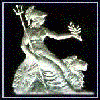
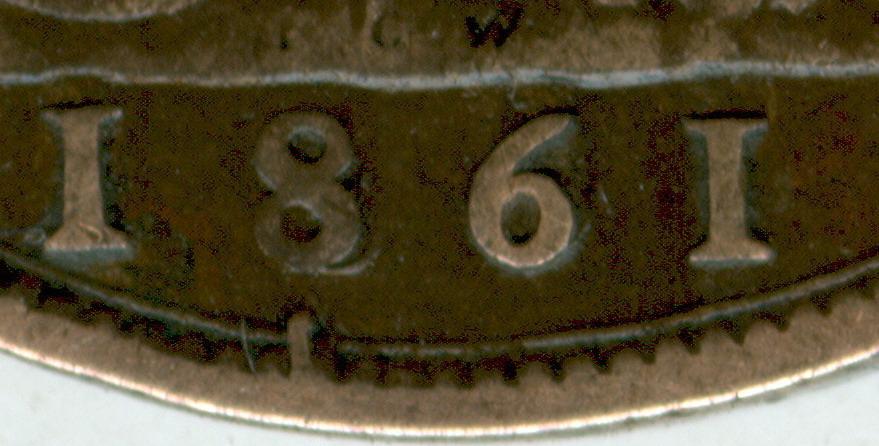
.thumb.jpg.ff2a9021da819967a3cdcf7fa86fd0d4.jpg)
.thumb.jpg.0d6a21bdbc1884ff7e9bbda1c760fabd.jpg)





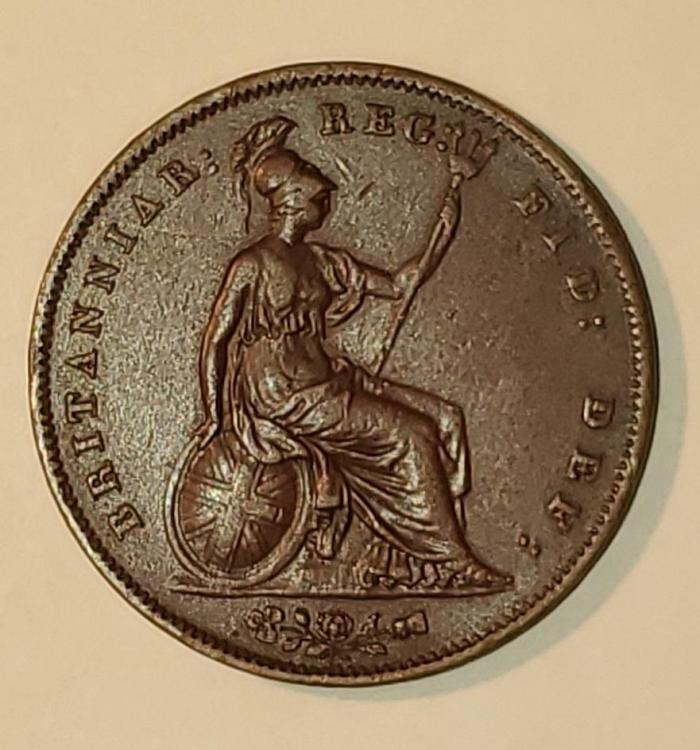
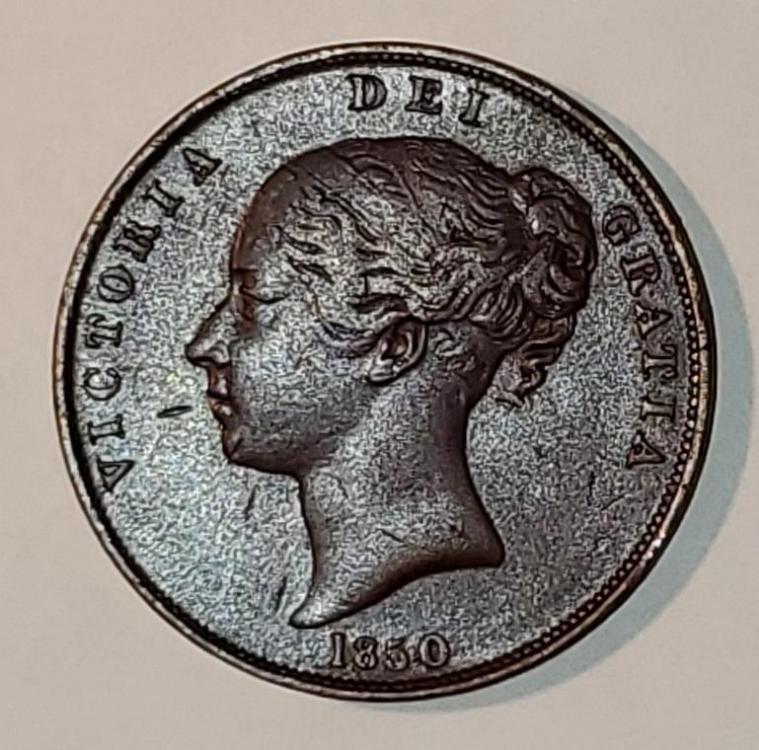
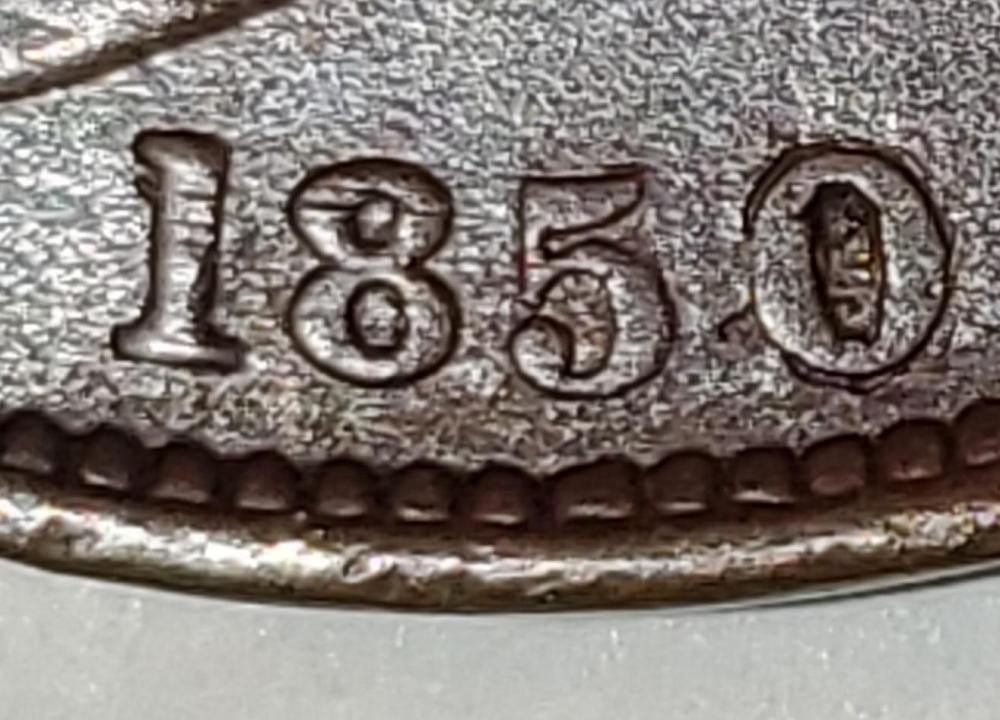

1860 penny Freeman 14. LCW below foot.
in Wanted
Posted
This is an intriguing thread, which makes me want to bring up two issues.
1) My personal pet peeve is regarding those that say “I COULD care less”.
I have always said “I COULDN’T care less” inasmuch as it, to me, is more logical.
If you could care less, then it has at least some modicum of importance to you.
If you couldn’t care less, then it is of the absolute least possible importance to you.
Yet, for some reason, both are used interchangeably, and accepted as meaning the same thing.
2) Being neither a student nor scholar in either languages in general or specifically in Latin, I would ask whether the fact that the various Latin words in question are used in a sentence written in English would have any bearing on the issue.
Would the Latin words that have entered the English language be subject to the rules of Latin Grammar or the rules of English grammar, or would a combination of correct Latin grammar and common English usage be the ultimate determinant of acceptable use?
Would this be considered to be within the guidelines for the accepted evolution of a language?